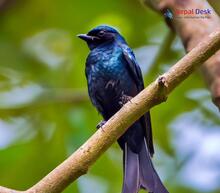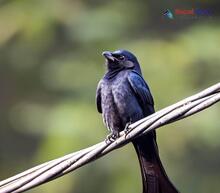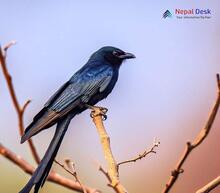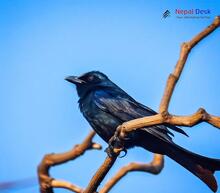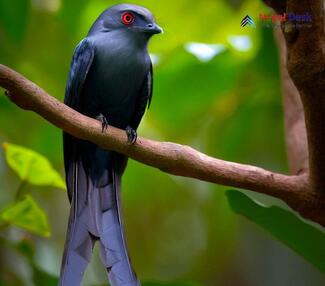Nestled within the magnificent embrace of the Himalayas, the small country of Nepal boasts a remarkable array of plant and animal life. The Dicrurinae, a captivating subfamily of passerine birds, is one such example that inhabits this magical region. Known for their striking appearance and peculiar behaviors, these enthralling birds are a significant part of Nepal's abundant ecosystem. Here, we'll take a journey into the world of Dicrurinae and uncover what makes them exceptional inhabitants of Nepal.
Introducing the Dicrurinae
Primarily comprising drongos, the Dicrurinae subfamily includes medium-sized, black, or grey-black perching birds characterized by their forked tails and hooked bills. With more than 20 species dispersed throughout Africa, Asia, and Oceania, these nimble creatures have adjusted to various habitats such as forests, woodlands, savannas, and even residential neighborhoods.
Dicrurinae's Unmistakable Features
A unique tail shape distinctly sets members of Dicrurinae apart from other bird families. Most species showcase long and profoundly forked tails that enable them to execute acrobatic moves during insect hunts or predator evasion. Coupled with their gleaming plumage – which varies from shiny black to metallic blue or green – these remarkable birds offer a feast for any bird lover's eyes.
Exceptional vocal talents also define drongos as they are known to mimic the noises made by different birds or even animals. This clever way of communication allows them to deceive or distract potential dangers and further highlights their dominion over their surroundings.
Nepal: A Sanctuary for Dicrurinae
Nepal's assorted landscapes provide a flourishing environment for numerous Dicrurinae species, such as the Black Drongo (Dicrurus macrocercus). This impressive bird can often be seen across Nepal's southern plains and is affectionately called the "king crow" by some locals. Adaptable to the country's various altitudes, the Black Drongo also inhabits subtropical forests and open farmland.
Another native drongo species is the Ashy Drongo (Dicrurus leucophaeus), recognized by its pale greyish coloration and vivid red eyes. Mostly found near water sources and in open woodland areas, observing these captivating birds is just as enchanting as their appearance.
Conserving and Cherishing
Like many other wildlife species, Dicrurinae birds face threats from habitat loss and fragmentation due to human intervention and deforestation. Safeguarding these extraordinary avian residents of Nepal is vital – not only to maintain fragile ecosystems but also to conserve the area's rich biodiversity.
Understanding and valuing these enigmatic creatures significantly contributes to their preservation. So, as you set out on your next nature trail or birdwatching adventure in Nepal, keep an eye out for these mesmerizing members of the Dicrurinae subfamily – a living embodiment of Nepal's unparalleled natural beauty.

